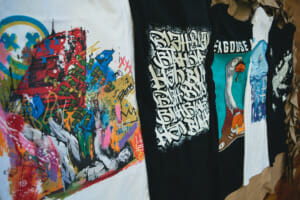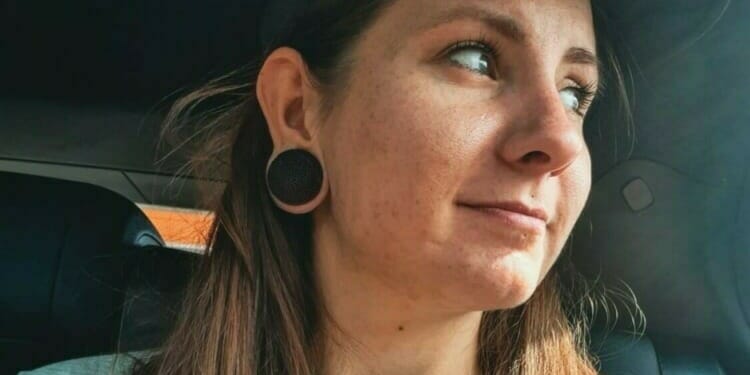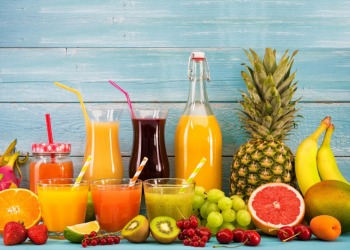Grete Merlyn is the founder of New Ordinary People (NOP), an ethical made-to-order clothing and accessory line made from sustainably-sourced materials. Recognizing a gap in the market for sustainable streetwear, Grete applied her skills as a designer to create fashion forward basics like graphic tees and hoodies that give the wearer a sense of belonging to a community. We spoke to her about the power of streetwear to shape identity and forge meaningful connections, and why NOP is more than just a clothing brand, but a way of life.

What was the inspiration for starting NOP?
It all began with my own personal journey towards a zero-waste lifestyle in 2016. One day, I came across a website that talked about zero-waste and it was the first time I could put a name to the personal transformation I was undergoing. I began questioning everything I bought and using more sustainable and natural products. I had a wardrobe full of clothing from fast fashion brands which I wanted to break free from, but trying to find sustainable clothing for me was like the wild west. Nothing I found I would actually wear, everything was a bit ”radical chic” and not really my style. The streetwear brands I liked and ordered from still wrapped things in plastic. On the other hand, the brands I found that were committed to sustainability weren’t great quality, despite the high price tag.
Before I became a digital artist, I actually wanted to study fashion in Milan. I know how to tailor clothes and would regularly sew stuff I owned to fit me better. I’m not just a digital designer, I actually know how to make things as well, so creating a clothing brand seemed like a natural solution to this problem I was having. I studied how to build a brand and threw myself into it to see if I could make something I wanted to wear and that maybe other people would want to wear too.
That’s how NOP was born in March of 2021. We sell graphic t-shirts, tops, hoodies, dresses – sporty, streetwear stuff. I don’t make anything that I myself wouldn’t wear. Creating NOP was my way of dealing with all the environmental and social problems I came to learn about as I delved deeper into the zero-waste lifestyle and the sense of helplessness that came with it.
How do you source your materials?
Our GOTS certified cotton is grown in India. The raw material then goes to Bangladesh where it’s processed in a Fairwear certified factory. Textiles account for 80 percent of Bangladesh’s exports. A lot of the factories involved in the industry are very exploitative, they employee child labour and the working conditions are terrible. I wanted to go where the problem is and play a part in the fight against poverty and the exploitation of people by working with Fairwear certified factories.
From Bangladesh the sewn t-shirts go to France, where they are kept until someone orders a shirt, and then we print it. All our items are made to order, we don’t create products if they’re not intended for someone. Mass production isn’t sustainable, you can’t produce things that aren’t guaranteed to be bought and worn.
Talk us through the design process. Who do you have in mind when designing your pieces?
Customers can choose from a selection of printed designs I created. As a designer, it’s important to surround myself with very positive and proactive people who can inspire me. Or I go to museums and art collections, but that was a little difficult during Covid, so I just watched a lot of movies which served as visual inputs that I translated into my own sketches. I usually get my inspiration from documentaries and I always have a sketchbook near me. I would say maybe five percent of what I sketch actually ends up being used as designs.
The brand, New Ordinary People, is named after the people for whom the clothes are made. I really wanted to build a sense of community around the brand and for the brand to actually represent a community of people with a shared interest in sustainability. The path to zero-waste is a lonely road, it can be a struggle to make people around you, even your friends and family, acknowledge and understand your efforts. So, when you find another person in an NOP shirt, you already know that they share your point of view, and that can make you feel good and less lonely.
When I think about NOP clothing, I imagine a person who loves streetwear, who is ethical and sustainable. They are probably business-minded but have an artistic soul. They love sports, maybe they’re a surfer or a kickboxer. They have positive vibes and are self-confident.
With the adoption of the UN 2030 Agenda and the 17 Sustainable Development Goals in 2015, sustainability is an essential guiding principle for businesses everywhere. What were some of the key learnings from your own path to sustainability and what are some of the future challenges you anticipate as the fashion industry responds to the greater demand for sustainable products.
Our products make a long journey from Bangladesh to Europe. We acknowledge that it would be better to source out materials locally, but then I wouldn’t be contributing to the improvement of worker’s lives in Bangladesh. Right now, every t-shirt we produce creates roughly 0.27 kg of carbon dioxide, so to compensate for that, we plant a tree for each product bought. Each tree absorbs about 10-20kg of CO2, so in the long term it will compensate for the shipping that we can’t avoid as long as we want to work with producers in the developing world.

Where would you like to see the fashion industry go in the next five years and how does NOP fit into that?
From my own sustainable path I mainly understood that sustainability doesn’t necessarily equal quality but more than that, I acknowledged what could possibly go wrong for the future of fashion. Now that people are trying to look for more sustainable products, but maybe aren’t ready to change from a fast fashion mindset, we’ll soon face a problem: organic cotton needs more land to grow and costs a lot more. It won’t be possible to source the market’s request. If our mindset won’t change, organic cotton will get things worse, so the number one goal should be to reset the way people buy their clothes. At least, it’s the first goal for NOP.
Editor’s Note: The opinions expressed here by Impakter.com columnists and contributors are their own, not those of Impakter.com — In the Featured Photo: Grete Merlyn Featured Photo Credit: NOP team










